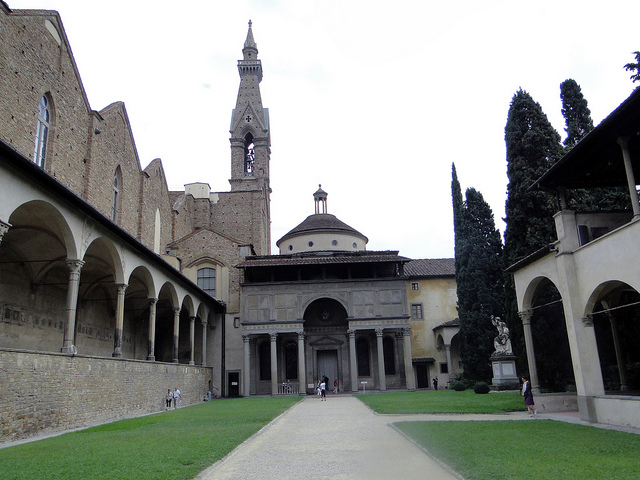A true masterpiece of Gothic architecture, the Basilica of Santa Croce is one of the oldest and easily one of the most impressive churches in Florence. Not only is it an impressive feat of design and building for the time period, but it also houses the remains of Michelangelo as well as many other illustrious former citizens of Florence.
Design of Basilica of Santa Croce
Started in 1294, the construction of the Basilica was well documented throughout the centuries. The church was started after the architect Arnolfo di Cambio approved the plans and laid the first stone himself. With huge designs and plenty of grand space, the church today is a fascinating study in contrasts and grandeur.
The church is set up in the shape of the Egyptian cross, which is essentially a T. Inside the church you’ll find three naves as well as a chancel and transept full of private chapels. These smaller chapels were reserved for some of the most prestigious families of the day including the Bardi and Peruzzi families.
Along the walls of the chapels and other parts of the interior you’ll find an impressive number of frescoes created by Giotto and his students. The stained glass windows found in the church are also creations by the same group of artists.
144 years after it was started, the Basilica was completed in 1442. The church was official consecrated although the exterior remained undecorated for another two hundred years. The facade of the church was completed in 1863 and a new bell tower was constructed at the same time to replace the original one that had been struck by lightening previously.
Visiting the Basilica of Santa Croce
Today, as you wander through the church, you’ll see the additions overtime to the church design as each generation left its own mark on the original design and architecture. Statues, stained glass and paintings abound in the various parts of the building, and underfoot you’ll see 276 tombstones.
This is just a small number of the many graves and tombs found within the church and around the grounds. Among these tombs is a veritable “who’s who” of ancient Florence including the famed artist Michelangelo and many other prestigious citizens of the area. Many consider the church to be a sort of Pantheon for Florence as it is full of artistic treasures and treasured remains.



